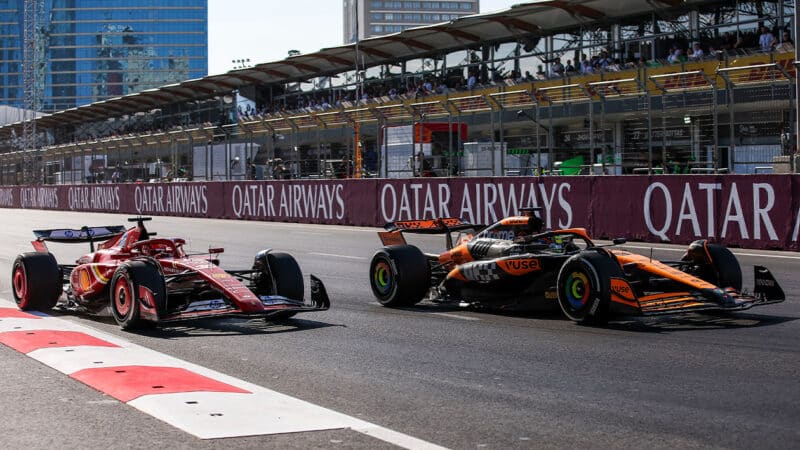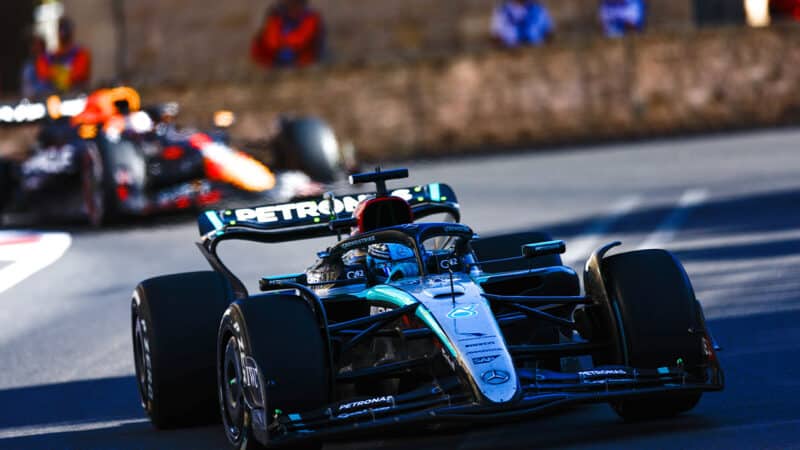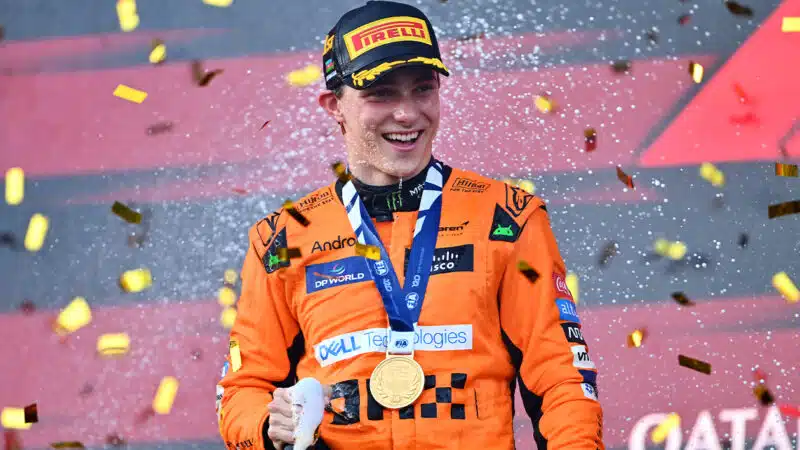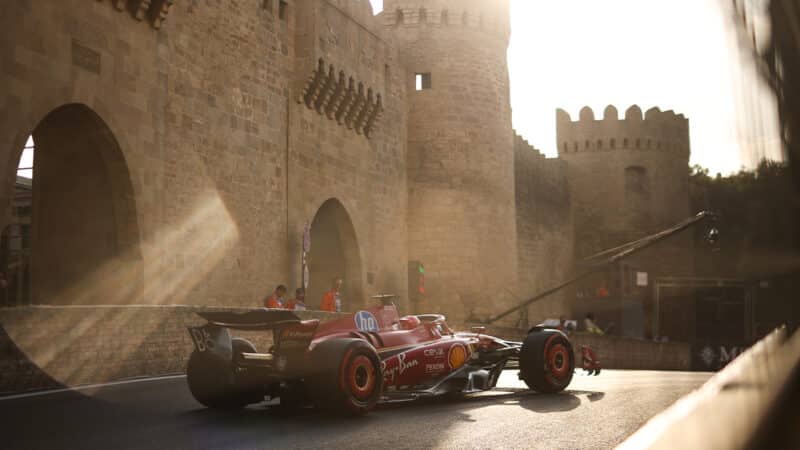Ferrari had pitted its man one lap after Piastri from 5.9sec in front. But his out lap was a full 3sec slower than Piastri’s had been. As the Ferrari’s hard tyres stubbornly refused to come quickly up to temperature even on the next lap, Piastri found himself temptingly close to the Ferrari as they raced up to Turn 1 to begin lap 20 of the 51-lap race.
“We expected the undercut today to be difficult,” said Leclerc, “just of the warm-up on the hard… but we’ve got to look into how the gap went from six seconds to one and a half, because that is definitely not what we expected.”
Leclerc’s missing a chunk of practice from crashing on Friday may have played its part in Ferrari being caught by surprise with this trait.
Piastri’s bold move
Piastri had just been warned by his engineer Tom Stallard not to push his new tyres too hard attacking Leclerc early in the stint, as that had been what had damaged his previous set. But Piastri wasn’t in the mood to agree with that assessment. His reasoning was that he could far better look after his tyres if he was in clear air – and therefore he needed to take the opportunity of being so close to Leclerc to put a move on him immediately. “Otherwise you just use up your tyres in the dirty air.”

Piastri surges past Leclerc with no margin for error
But even so, Piastri’s move into Turn 1 was from a long way back, taking Leclerc by surprise. It was incredibly finely-judged, with Piastri’s outer front tyre running right up to the outer wall of the corner with a lot of steering lock applied, such had been the speed he’d taken in to pounce upon the Ferrari. But it worked.
Leclerc later kicked himself for not having blocked the move, but was not initially too concerned. He’d just use his DRS to stay with the McLaren, he reasoned, without pushing the tyres too hard – then make a retaliatory move later, as the McLaren’s tyres faded.
Except that’s not what happened.
McLaren’s straightline speed
The advantage of running in clear air turned out to be greater than that of using DRS to stay in touch while not stressing the tyres through the corners.
Had the positions been reversed, would the McLaren have been able to stay on the Ferrari’s tail the way Leclerc was doing to Piastri? Given the first stint pattern, perhaps not. Although Leclerc insists the Ferrari was just never very good on the hard tyres. Sainz might dispute that, given how fast he was in the race’s late stages on the hards, as he caught up with Perez to make it a four-car nose-to-tail contest for the latter few laps.
Leclerc several times got alongside Piastri into the braking zone for Turn 1, forcing the McLaren driver to get very defensive. But a few laps of this would allow Perez to begin troubling Leclerc, giving Piastri an occasional breather.
“On all the straights they were flying,” said Leclerc of the McLaren, “and that’s probably where I lost the race [by not blocking Piastri]. I think they were running a little lower downforce than us.” Once Piastri was through, in other words, Leclerc didn’t have the straightline speed, even with DRS, to make the pass. Not with a driver as unflappably calm as Piastri.

No way past for Leclerc
Joe Portlock/F1 via Getty Images
Leclerc’s tyres finally gave out with three laps to go, Piastri sprinted away and now Leclerc was under attack from Perez. As he held the Red Bull out wide on the exit of Turn 1, it lost Perez momentum – allowing Sainz to pounce for third, Carlos then even taking a little look around his struggling team-mate’s outside at Turn 2. But this put him off line, allowing Perez to come back at him, on the inside. As Sainz gradually leant left to take up his line, with Perez partly alongside, the Red Bull driver refused to surrender track space. They interlocked wheels and crashed each other hard into the wall.
At just this moment Verstappen came into the pits, rejoining without losing his position (now fifth) but with a new set of soft tyres, on which he would surely have set the fastest lap. But he was unable to, as the race shortly afterwards was put under a VSC. Which left the fastest lap with his title rival Lando Norris who had made a great recovery from his 15th place start to finish fourth, passing Verstappen along the way.
George Russell picked up an unexpected podium from the carnage, having been slow on the mediums in the first stint but very fast on the hards in the second, allowing him to catch and pass Verstappen who was at no stage anything other than very unhappy with the behaviour of his Red Bull, feeling he’d gone the wrong way on set-up in between FP3 and qualifying. Perez had demonstrated that the Red Bull could be fully competitive around here, which was both encouraging and troubling for the world champion as he seeks title number four. Behind Verstappen, both Fernando Alonso and Alex Albon drove beautifully-judged races for Aston and Williams respectively, with Alonso always holding the upper hand, but the Williams showing great progress.

Russell passed Verstappen in a fast second stint
Mercedes-AMG
A brilliant race, won by a brilliant performance from a driver in just his second season. Meanwhile, two drivers in just their second grands prix – Franco Colapinto and Oliver Bearman who were eighth and 10th respectively for Williams and Haas – drove head-turning races and sandwiched the pitlane-starting Mercedes of Lewis Hamilton at the flag.



